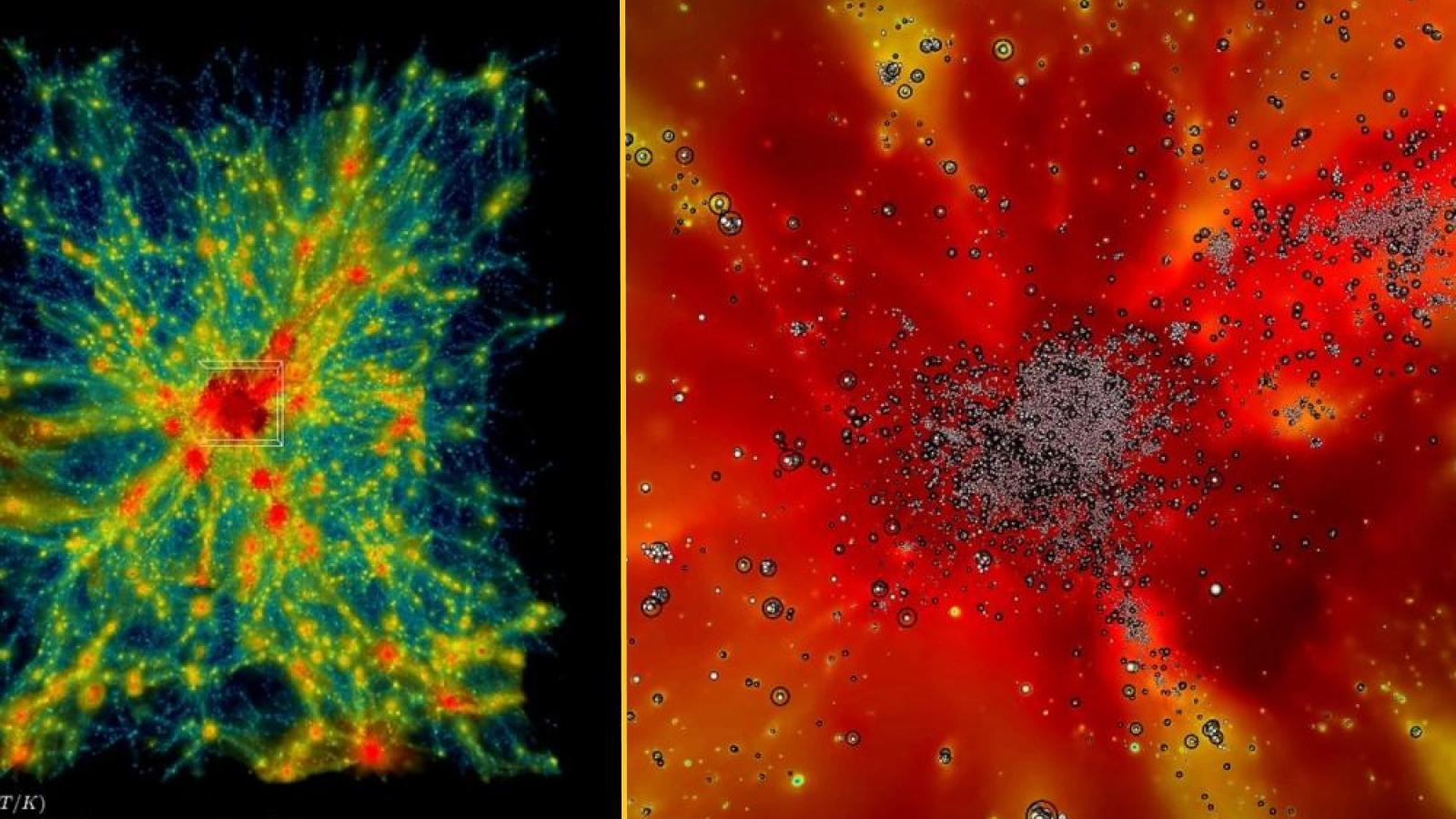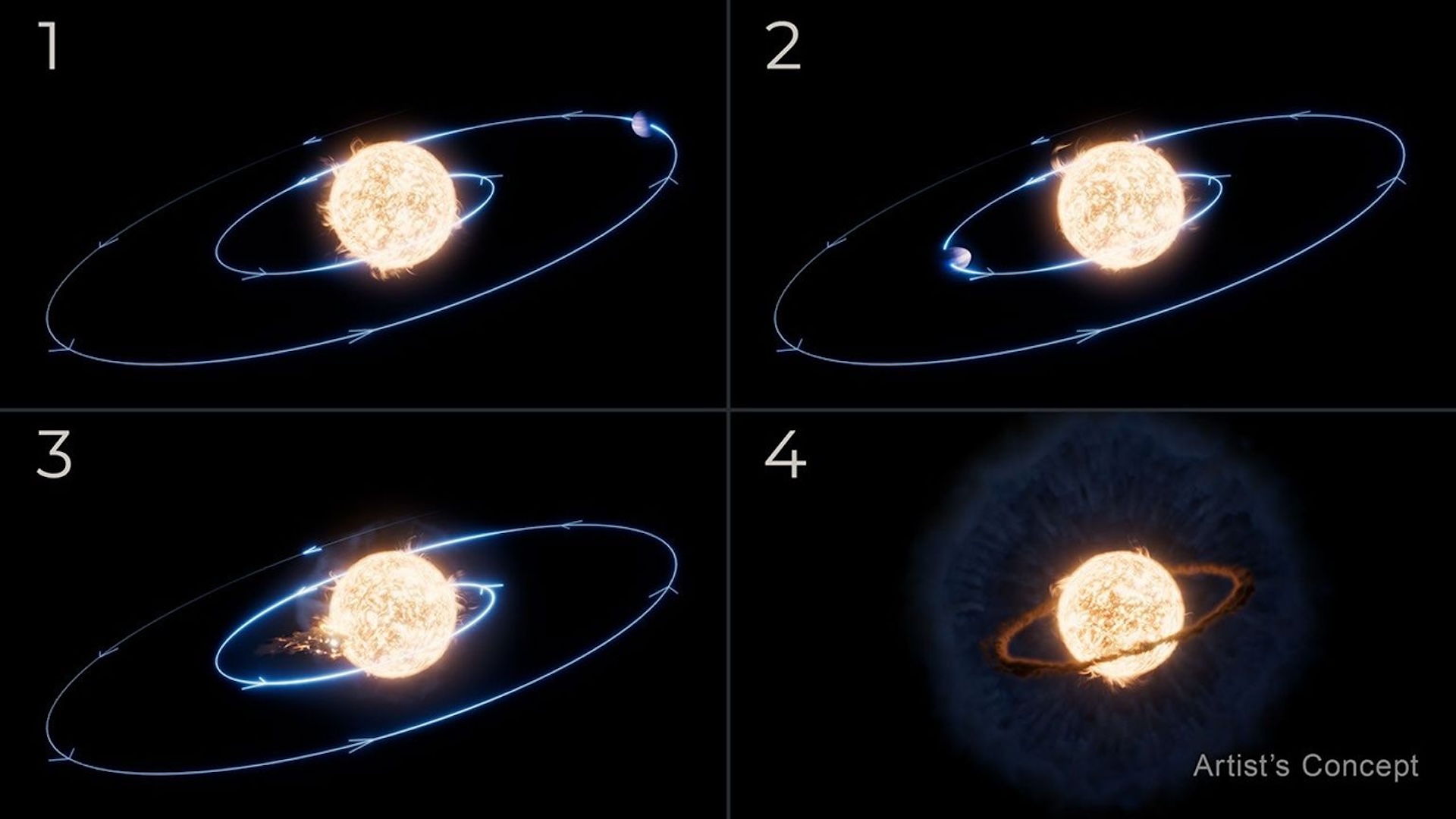Supercomputer runs largest and most complicated simulation of the universe ever
Frontier, the second fastest supercomputer in the world, used dark matter and the movement of gas and plasma rather than just gravity to model the observable universe.

The potential for our understanding of the universe has taken a giant leap forward after Frontier, a supercomputer based in the Oak Ridge National Laboratory (ORNL), created a simulation of the universe at a scale never before achieved.
Frontier used a software platform called the Hardware/Hybrid Accelerated Cosmology Code (HACC) as part of ExaSky, a project that formed part of the U.S. Department of Energy's (DOE) $1.8 billion Exascale Computing Project — the largest software R&D initiative backed by the DOE.
Under Exasky, scientific applications were required to run up to 50 times faster than previous benchmarks, but Frontier and HACC quickly raced ahead of expectations — running almost 300 times faster than similar simulations of Saturn's moon Titan. The DoE/HACC team had spent seven years since the first simulation enhancing the capabilities on exascale supercomputers like Frontier.
This allowed for hydrodynamic cosmology simulations, a far more computationally intensive computer model that incorporates principles like the expansion of the universe and the influence of dark matter. Previous models only incorporated measures of gravity, gas or plasma.
The power of exascale computing
The simulation, which was conducted in November 2024, used around 9,000 of Frontier's computing nodes, all fitted with AMD Instinct MI250X graphics cards.
Frontier is the second-fastest supercomputer in the world and can hit 1.4 exaFLOPS of power. The performance of supercomputers is measured in floating-point operations per second (FLOPS) — where one floating-point operation is a mathematical calculation.
Sign up for the Live Science daily newsletter now
Get the world’s most fascinating discoveries delivered straight to your inbox.
Anything capable of more than 999 petaFLOPS (0.9 exaFLOPS) is referred to as an "exascale" supercomputer. The only other machine more powerful than Frontier is El Capitan — which can reach 1.7 exaFLOPS of power.
Beyond simulating the universe, Frontier has been used in other crucial research. In April 2023, scientists built the Simple Cloud-Resolving E3SM Atmosphere Model (SCREAM) — a program that simulated an entire year of global climate data down to a resolution of just over 3km. One of the most complex climate models ever computed, it's now a cornerstone in the analysis of complex interactions between the atmosphere, oceans and land to improve weather predictions and gather higher-fidelity data about climate change.
In materials, Frontier has let designers come up with new substrates and geometries for enhanced-property substances, making them stronger, lighter and corrosion-proof. Its exascale computing capabilities have allowed researchers to model chemical interaction at the molecular scale to predict material behavior. The supercomputer has also been pivotal in finding new materials for energy storage, transport, manufacturing and nuclear medicine.
However, scientists are particularly excited about how exascale computing can supercharge artificial intelligence (AI). The speed of these machines lets programmers iterate algorithms and analyze large datasets rapidly, especially in tasks like faster large language models or the application of supercomputers to climate models and climate change prediction.
Drew is a freelance science and technology journalist with 20 years of experience. After growing up knowing he wanted to change the world, he realized it was easier to write about other people changing it instead. As an expert in science and technology for decades, he’s written everything from reviews of the latest smartphones to deep dives into data centers, cloud computing, security, AI, mixed reality and everything in between.
You must confirm your public display name before commenting
Please logout and then login again, you will then be prompted to enter your display name.











